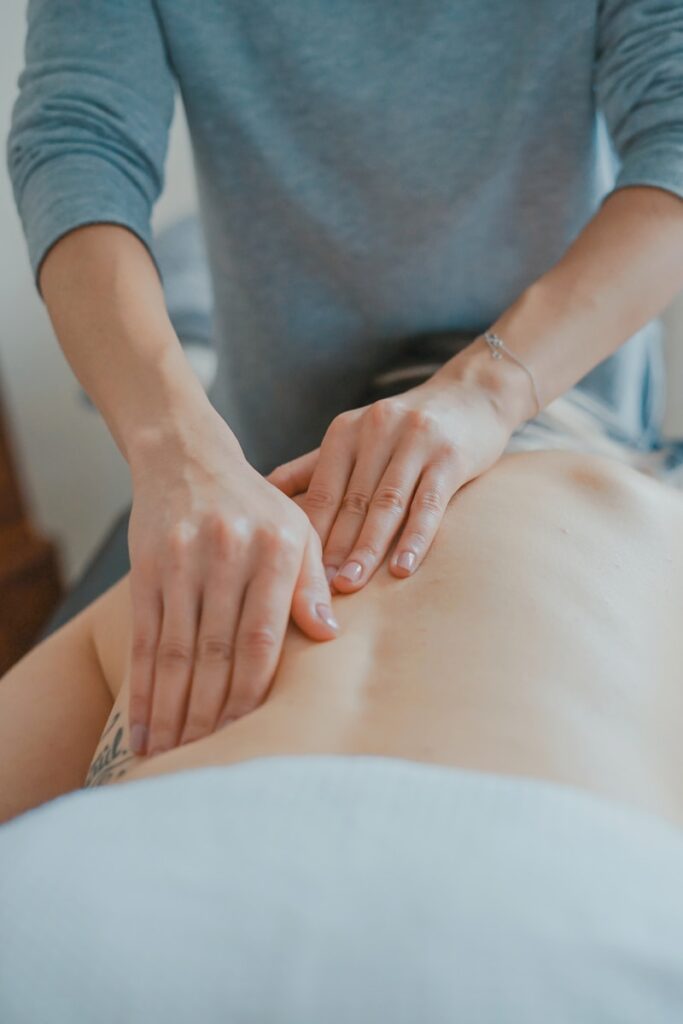Sports Pain: Acute vs. Overuse
Athletes push their bodies to achieve speed, strength, and skill, and occasional pain can come with that territory. Yet not all pain is the same. Acute pain usually follows a specific event, like a sudden ankle roll or a hard cut on the field, and tends to have rapid onset and swelling. Overuse pain builds gradually as tissues are stressed repeatedly without enough recovery, often showing up as a dull, nagging ache during or after training. Understanding the difference matters for treatment timelines and your short- and long-term performance. Acute issues may benefit from brief unloading and targeted support, while overuse problems often require thoughtful load management, progressive strengthening, and technique adjustments. Our approach emphasizes non-surgical pain relief, clear education, and practical steps you can start immediately so you are not sidelined longer than necessary. If you are unsure which type you have, our team will help identify the pattern and match it with the right level of care.
- ankle sprains
- runner’s knee
- shoulder impingement
- hamstring strain
Assessment for Athletes
Your evaluation starts with a focused conversation about symptoms, training volume, positions or events, footwear and equipment, sleep and stress, and where you are in the season. We then perform a movement assessment that may include gait or run analysis, deep and single-leg squat, lunge, step-down, hop testing, landings, and sport-specific drills such as cutting, acceleration, deceleration, or overhead patterns. We test strength, mobility, and tissue tolerance (for example, calf raises for Achilles or resisted external rotation for the shoulder) and screen the spine and kinetic chain to see how nearby regions contribute to the problem. Imaging is used judiciously and typically only if red flags are present or your progress stalls. You will leave with a clear plan, an estimated timeline, and simple self-care steps to start right away.
Evidence-Based Manual Therapy & Rehab
Manual therapy can be a powerful accelerator when used alongside active rehabilitation. Depending on your presentation, we may use joint mobilization, soft tissue and myofascial techniques, targeted stretching, nerve glides, and instrument-assisted work to modulate pain and restore motion. Kinesiology or rigid taping can offer short-term support for tendons and joints while you build capacity. But hands-on care is only part of the solution. The backbone of sports rehab is specific exercise dosing: isometrics to calm reactive tendons, eccentrics to remodel tissue, heavy slow resistance to build strength, and plyometrics when you are ready to absorb and produce force. Education ties it together so you understand why each step matters. This blended, evidence-based performance care model keeps you active within safe limits while preparing you to handle higher demands without flare-ups.
Strength, Mobility & Load Management
Most athletic pain improves when the right tissues are strengthened and training stress is progressed at a sustainable pace. We map your weekly and monthly workload, identify spikes that may have triggered symptoms, and adjust volume, intensity, and frequency so you can keep training. Mobility work is targeted—opening what is stiff and stabilizing what is lax—to improve positions for strength and speed. Tendon-related pain often responds to slow, heavy loading; lumbar and hip issues may benefit from anti-rotation core work and posterior chain development; shoulder and elbow pain in throwers typically needs scapular control and rotator cuff endurance. We also address sleep, hydration, and nutrition basics that influence tissue recovery. The goal is not simply to feel better, but to perform better with fewer setbacks. To make the path transparent, we organize your plan into clear phases you can track at home and on the field.
- calm pain
- restore motion
- build strength
- sport integration
Each phase has criteria to progress, preventing the common cycle of doing too much too soon or not enough for long-term adaptation.
Return-to-Play Milestones
Readiness is more than “it hurts less.” We use objective checkpoints to guide your safe return: pain-free range of motion, near-symmetrical strength and power measures for the involved limb, controlled mechanics in cutting and landing, and sport-specific tests such as repeated sprints, change-of-direction drills, or overhead velocity work. For runners, this might include progressive run-walk intervals, cadence targets, and terrain management; for field and court athletes, we layer deceleration, re-acceleration, and reactive agility. You will know exactly what boxes to check before full clearance, and we coordinate with coaches and trainers so your on-field ramp-up matches your clinical progress.
Injury Prevention & Warm-Up Routines
Prevention is not guesswork; it is a structured habit. We design dynamic warm-ups that raise tissue temperature, activate key muscle groups, mobilize the joints you rely on, and potentiate power with short, crisp efforts. Expect drills like marching, skips, leg swings, hip airplanes, band walks, pogo hops, and short accelerations. For overhead athletes, we add scapular and cuff activation; for runners, ankle stiffness and calf capacity work; for field sports, decel mechanics and landing quality. We teach you how to taper and deload, rotate shoe types or spikes when appropriate, and build a simple maintenance circuit you can perform in 10–12 minutes before practice or training.
Programs for Youth, Collegiate & Adult Athletes
Age, training age, and schedule all shape your program. Youth athletes need technique, varied movement exposure, and sensible workloads to protect growing tissues; we keep sessions engaging and communicate with parents and coaches. Collegiate athletes balance high practice volumes and travel; we focus on quick resets, recovery strategies, and targeted strength doses that fit tight calendars. Adult competitors and recreational athletes often juggle work and family; we emphasize efficient programming, realistic progression, and prevention of boom-and-bust cycles. Whether you sprint, swim, lift, cycle, row, climb, skate, or play court and field sports, we tailor manual therapy and progressive exercise to your goals so you can train with confidence and reduce time off.
FAQs: Recovery Time, Bracing, Imaging & Insurance
How long will recovery take? Timelines vary by tissue and severity: many sprains and strains improve meaningfully in several weeks with consistent care, while tendon remodeling can take longer. We provide an honest estimate and adjust as you hit milestones. Should I use a brace? Short-term bracing or taping can unload irritated tissues while you build capacity; we will show you when and how to use them, then wean strategically. Do I need imaging? Most sports injuries are diagnosed clinically. We recommend imaging if red flags are present, if progress stalls despite appropriate care, or if results would change management. Is this covered by insurance? Many plans include benefits for conservative care; our team helps you navigate coverage, out-of-pocket costs, and HSA or FSA options. Can I keep training? In most cases yes—within pain-guided limits—so you stay fit while rehabbing. We coordinate with your coach or trainer to align clinic work with practice.
Get Back in the Game
Great care is clear, motivating, and measurable. Our approach to pain relief for athletes blends manual therapy, targeted exercise, and smart load management so you can compete with less pain and more resilience. You will know what to do today, what to do next week, and how to maintain gains when you are back at full speed. If you want non-surgical pain relief that preserves your season and builds durable capacity, we would love to help. Reach out to Primary Health Clinic to start your plan, schedule a comprehensive assessment, and begin a stepwise return to training built on sports rehab and evidence-based performance care.






